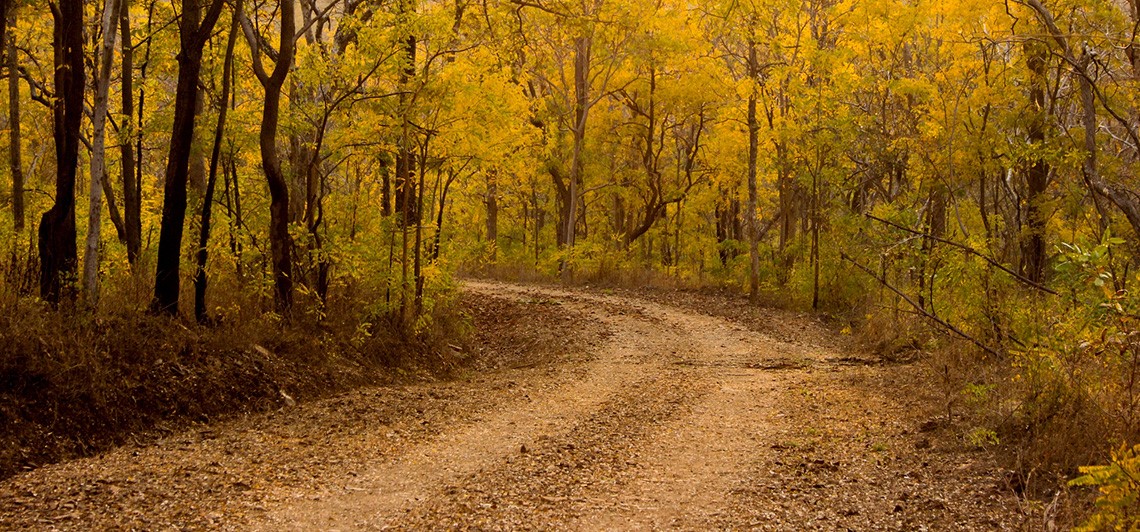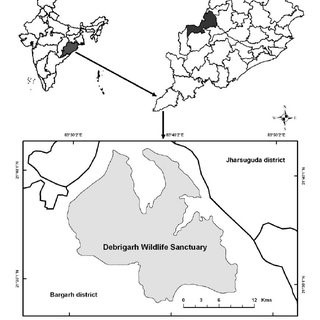Description

Disclaimer: Copyright infringement not intended.
Context
- Herbivore or prey density of 46 animals per sq km was recorded in a pre-monsoon sign survey.
- The survey was conducted in Debrigarh Wildlife Sanctuary Odisha by the Hirakud Wildlife Division.
- During this Census exercise a tiger was also sighted in Debrigarh which is believed to be a first in many decades.
Other Details
- Last year the pray density was recorded in the range of 29-38 prey per square kilometre.
- To improve the situation an initiative, ‘Debrigarh 48’, was launched.
- This initiative prevented villagers from harming the wildlife and involved them in collecting intelligence from the peripheral area.
- This led to the pray density of 46 animals per sq km this year, which is considered healthy (40-60 animals per sq. km).
- Spotted deer population have the highest density - 90 per sq km.
- Other highest density species are Wildboar, bison, sambar and chowsingha
- More than 1100 carnivore, like bear and leopard, signs were recorded.
- Population of leopard increased from 70 to 82.
Current conservation measures -
- Currently, for conservation efforts, the regular meetings are being organized and informer networking is being strengthened in 48 villages.
- For better coordination and conservation, SHG groups and EDC groups are being sensitised.
- Regular monitoring and vigilance using Mobile patrolling vehicles.
- 400 families of four villages from sanctuary are located to other places in bid to minimize man-animal conflict and provide more undisturbed habitat to wild life.

Debrigarh Wildlife Sanctuary Odisha
- The sanctuary, established in 8 February 1985, is located near Hirakud Dam on the Mahanadi River which is in western Odisha.
- It is an important site for in-situ conservation of wildlife which is spread over an area of 346 sq km.
- It lies in the Biographic zone of Deccan Plateau/Gangetic Plain.
- It is connected with the Gomardha (Sarangarh-Gomardha) Wildlife Sanctuary, Chhattisgarh in its west.
- It comprises of Lohara & Debrigarh Reserved Forests of famous Barapahad hills of Bargarh District.

Flora
- Mostly it has Deciduous forest, dry deciduous forest.
- The trees include Bija, Sal, Asan, Aanla, Dhaura, Amla, Bela, Dhaura, Jamu, Kadamba, Kanchan, Kangara, Karanja, Kasi, Kendu, Kurum, Kusum, Mahul, Mango, Mundi, Phasi, Sidha, Simul, Teak etc.
Fauna
- With over 40 species of mammals, 234 species of birds, 41 species of reptiles, 12 species of amphibians, 42 species of fishes, 39 species of odonates, 85 species of butterflies and 38 species of spiders, it is extremely rich in biodiversity.
- This sanctuary has significant population of Schedule-I species like Leopard, Indian Gaur and Four-horned Antelope.
- Indian elephant, sambar, chital, and gaur are also found.
- In winter, the Herakud dam attracts migratory ducks.
Must read Article:
https://www.iasgyan.in/daily-current-affairs/amchang-wildlife-sanctuary
https://www.iasgyan.in/daily-current-affairs/jaisamand-wildlife-sanctuary
https://www.iasgyan.in/blogs/glimpse-of-national-parks-wildlife-sanctuaries-in-assam
|
PRACTICE QUESTION
Involving local communities along with the concentrated efforts of officials can led to an impressive in situ management of protected areas and can improve conservation status of wildlife. Discuss in context of Debrigarh Wildlife Sanctuary of Odisha.
|
https://www.newindianexpress.com/states/odisha/2023/jun/25/debrigarh-wildlife-sanctuary-of-odisharecords-higher-prey-density-2588380.html












